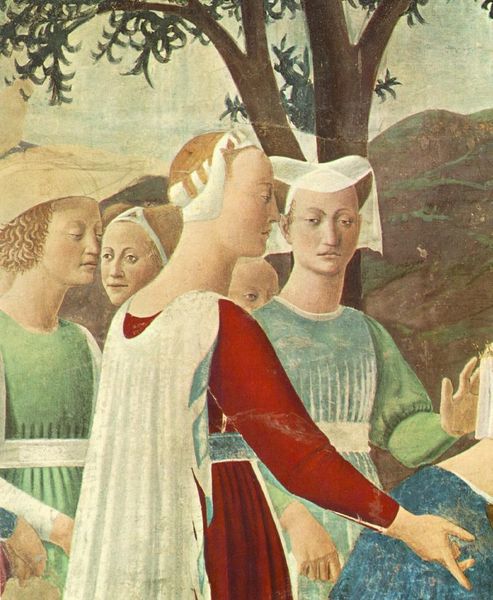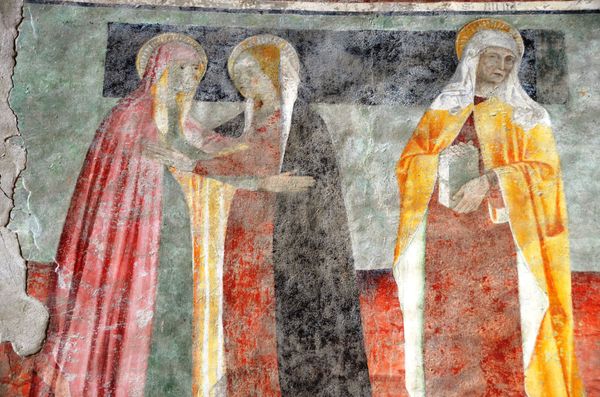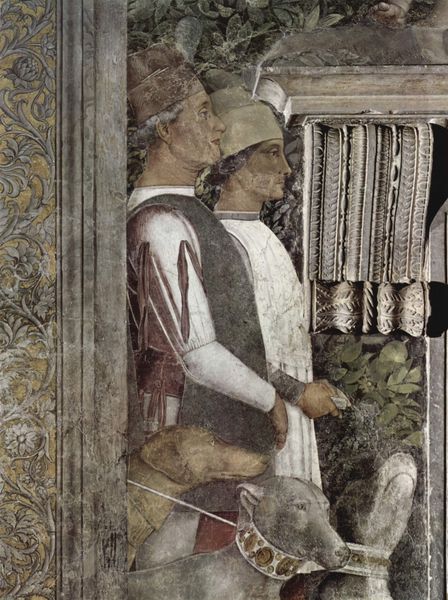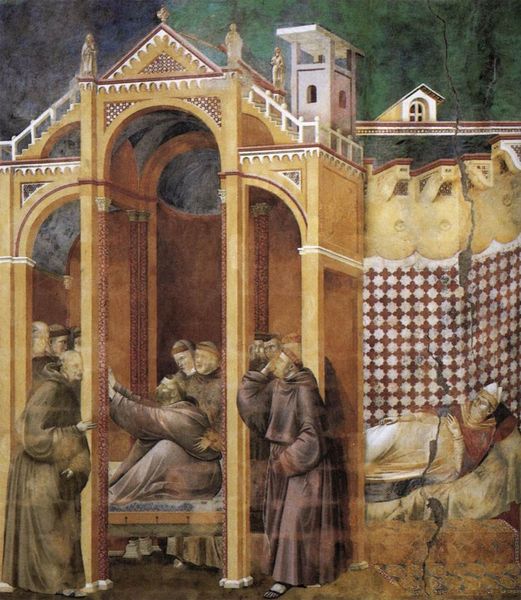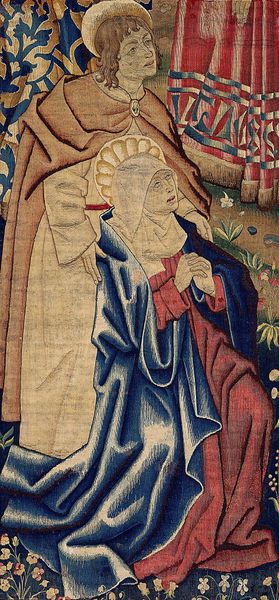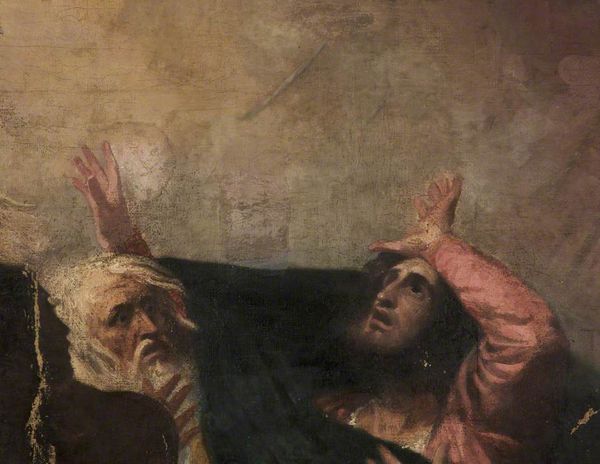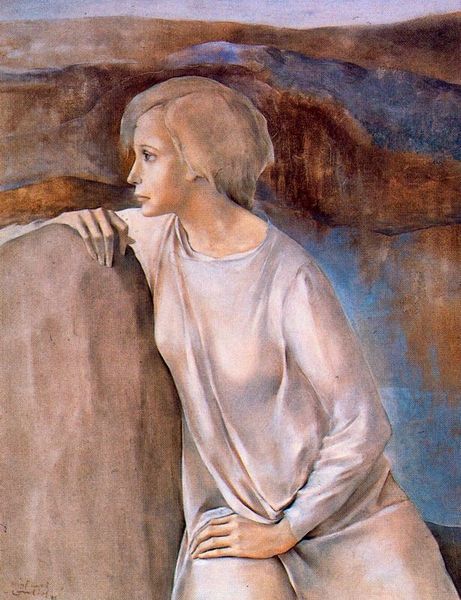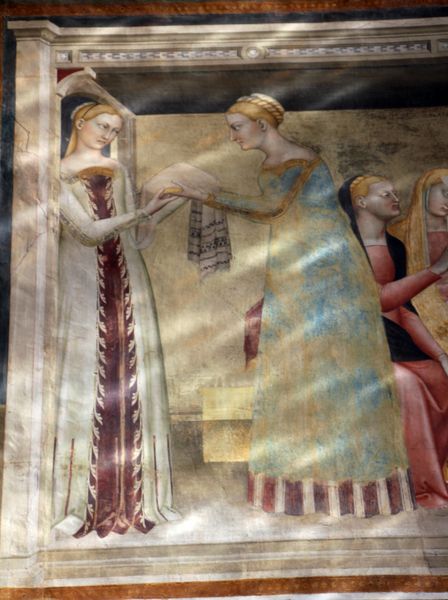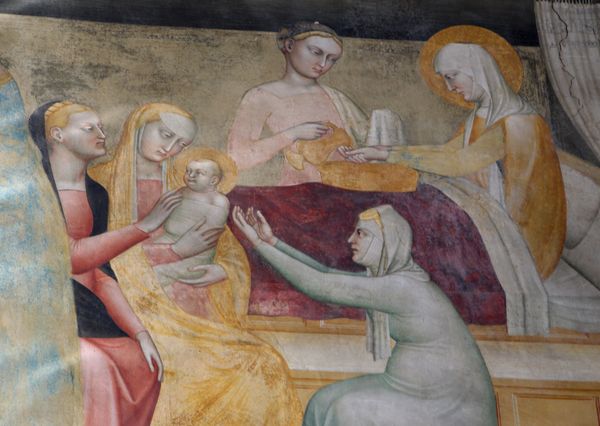
Procession of the Queen of Sheba (detail) 1466
0:00
0:00
pierodellafrancesca
Basilica of San Francesco, Arezzo, Italy
oil-paint, fresco
#
portrait
#
narrative-art
#
oil-paint
#
painted
#
fresco
#
oil painting
#
christianity
#
painting painterly
#
history-painting
#
italian-renaissance
#
portrait art
Copyright: Public domain
This detail of the Procession of the Queen of Sheba was painted in fresco by Piero della Francesca in the 15th century. The fresco technique involves painting directly onto wet plaster, a demanding process requiring careful planning and skillful execution, as corrections are difficult. The pigments, ground from minerals and mixed with water, were applied to the wall while the plaster was still damp, allowing the colors to bind chemically with the drying plaster, resulting in a durable image. Note the artist’s masterful use of color and light to create a sense of depth and volume. Fresco painting was a labor-intensive process, often involving a team of artisans working under the direction of a master artist like Piero. The creation of frescoes was a significant undertaking, representing a substantial investment of resources and labor on the part of patrons. Paying attention to the materials and processes used in its creation allows us to understand better the social and cultural context in which it was made, and it's lasting impact on the history of art.
Comments
No comments
Be the first to comment and join the conversation on the ultimate creative platform.
